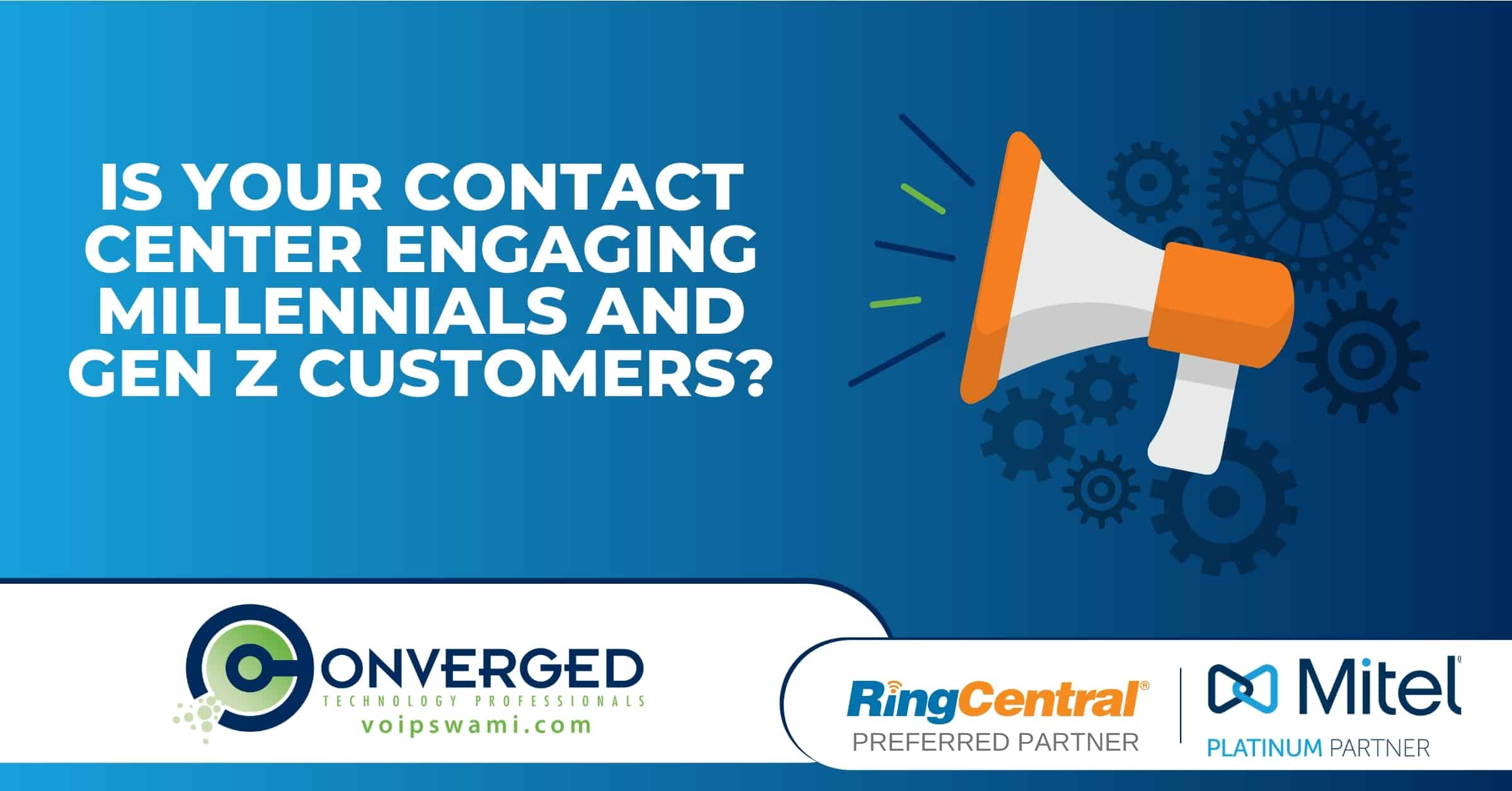
Kids these days aren’t really kids anymore. It is estimated that Millennials make up roughly 35% of the global workforce today, and Gen Z isn’t far behind at 24%. These younger generations have significant purchasing power, and the way we handle customer relationships must shift to cater to these customers.
While there has been a gradual transition to accommodate the Millennial buyer, many companies lag behind in forming their strategies for Gen Z. Contact centers can’t afford to miss out on building positive relationships with Gen Z customers.
Let’s examine how Gen Z and Millennials approach their brand relationships differently than previous generations and the key to earn their trust for years to come.
Comparing the Communication Habits of Millennials vs. Gen Z
Sometimes Gen Z and Millennials are lumped together in the collective business consciousness, but they are actually very distinct from one another.
Millennials who were born between the years 1980 and 1996 experienced life before and after a rapid tech boom. They got access to smartphones, social media, tablets and wifi later in their childhood or young adulthood.
According to Salesforce Research, 71% of Millennials say they trust companies vs. only 63% of Gen Z. This decline in company trust might have something to do with businesses’ lack of understanding in how to relate to these younger consumers.
What Channels of Communication Do These Populations Prefer?
Unlike previous generations, Gen Z did not grow up with traditional phone calls as the primary communication line with businesses. In fact, both Millennials and Gen Z are highly omnichannel in their approach to communication. 66% of the Gen Z population regularly uses more than one device and multiple apps simultaneously.
This means that contact centers, sales teams, and customer service departments must make an effort to provide as many communication methods as possible to connect easily with these customers.
Is it Worth Paying Attention to Gen Z and Millennials?
So what does this new generation of buyers look for in their business relationships? Is it even worth trying to create a Gen Z-friendly experience?
Gen Z and Millennials are a sizable part of the global customer base, and ignoring their preferences can harm your business. Both demographics will cut ties after a poor customer service experience more than five times per year.
As you can see, expectations have shifted across the buyer spectrum. These preferences indicate that companies get on board with these trends or risk losing out on business and loyal customers.

Leverage an Omnichannel Strategy to Engage Gen Z and Millennial Customers
So how do you keep your Gen Z and Millennial customers happy and engaged while making it easy for your service agents to do their job productively?
As we discussed, the key to connecting is by opening up various lines of communication. This demographic expects options far beyond a phone call, so you must be ready for outreach from email, webchat, video chat, text, social media, etc.
Whether you are a contact center, a sales team or an in-house customer service department, expanding your communication options will contribute to a positive experience for your customers.
Empowering Omnichannel, Customer Service and First Contact Resolution
The omnichannel approach offers a seamless customer service experience because all the communication lines, customer history and data exist in one solution, which avoids repetition and confusion.
This is a big deal because customers dislike repeating themselves. 89% of customers get frustrated because they must repeat their issue to multiple representatives. 90% of customers expect a consistent experience when interacting with a brand, which is much easier when communicating through an omnichannel strategy.
And in case you’re wondering, FCR (First Contact Resolution) is still a viable metric within an omnichannel customer service relationship. When you adopt a platform that allows for omnichannel communication, you will always have a consistent flow of information across all channels so that you can achieve FCR, whether it takes place on the phone, web chat or another medium.
The omnichannel approach improves employee performance since it simplifies their tasks and cuts down on time spent searching for information across multiple systems.
Learning About Omnichannel and the Cloud
To successfully implement a proper omnichannel strategy, you will need a cloud-based communication system to reach customers through many apps and devices. Platforms like RingCentral help you build stronger relationships and gain deeper insight with your Gen Z and Millennial customers.
If you would like some help finding the right cloud communications platform for your business, contact us to get a free demo and consultation.
If you enjoyed this article you may also enjoy:
